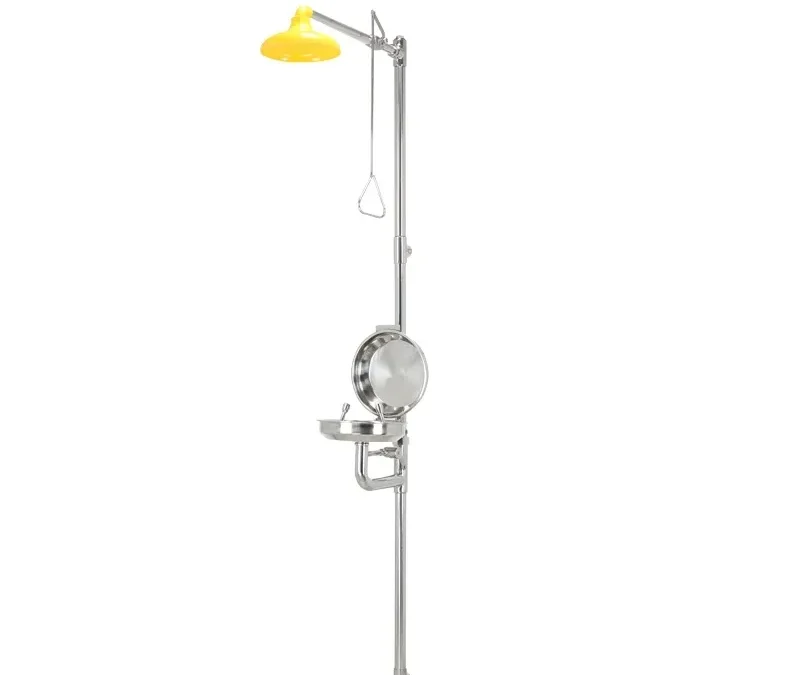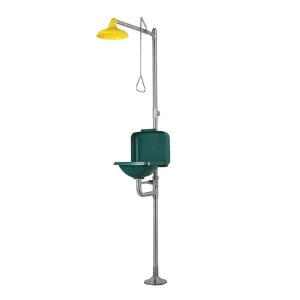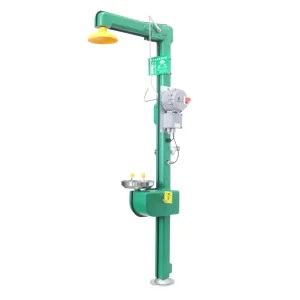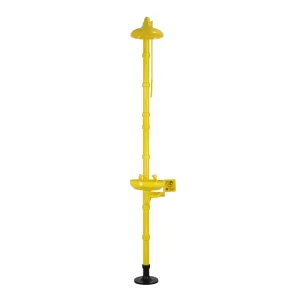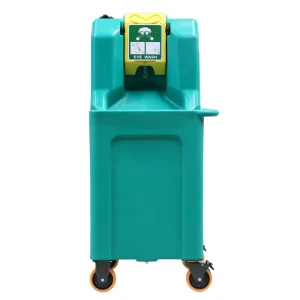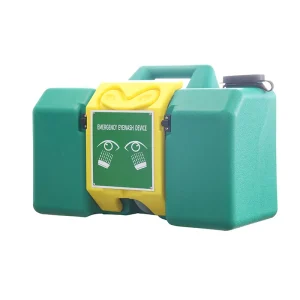This article verifies the significant improvement effect of 304 stainless steel material on the service life of eye washers through laboratory simulation tests and long-term field tracking. Experimental data shows that in corrosive environments, the failure period of key components (such as nozzles and valves) of 304 stainless steel eye washers is 3-5 times longer than that of ordinary carbon steel materials, and maintenance costs are reduced by more than 60%. The study also found that the corrosion resistance characteristics of 304 stainless steel can effectively reduce the risk of secondary damage caused by water pollution, meeting the long-term use requirements of international safety standards (ANSI Z358.1-2014).
Introduction
Eyewash stations are essential emergency equipment in high-risk locations such as laboratories and chemical plants, and their lifespan directly impacts the efficiency of accident rescue. Traditional carbon steel eyewash stations are prone to corrosion in acidic, salt spray, or humid environments, leading to issues such as clogged nozzles and stuck valves, which shorten the effective lifespan of the equipment. 304 stainless steel (06Cr19Ni10) is widely used in the manufacture of high-end eyewash stations due to its excellent corrosion resistance (resistance to acid, alkali, salt, and oil corrosion). This study quantifies the effect of 304 stainless steel on extending the lifespan of eyewash stations through comparative experiments and field data.
Materials and Methods
2.1 Test Object
Experimental group: 304 stainless steel composite eyewash (including spray system and eyewash system, in compliance with ANSI Z358.1-2014 standard).
Control group: Ordinary carbon steel eye wash (surface galvanized treatment).
2.2 Testing Environment
Laboratory simulation:
Corrosive solution: 5% hydrochloric acid, 10% sodium hydroxide, 3% sodium chloride solution.
Temperature: 25 ℃± 2 ℃, humidity: 70% ± 5%.
Spray test: 3 times a day, 15 minutes each time, simulate continuous use scenarios.
On site tracking:
Select three chemical plants (Jiangsu, Guangdong, Shandong) and record the failure rate of eye washers in real working environments.
2.3 Evaluation indicators
Corrosion rate: Measure the mass loss per unit area (g/m ² · h) of the material using the weight loss method.
Functional failure: nozzle flow attenuation (initial flow rate 12-18L/min), valve opening and closing force (≤ 20N), sealing performance (leakage rate ≤ 0.1L/min).
Maintenance cycle: frequency of filter cleaning, frequency of component replacement.
Results and Analysis
| Test item | 304 stainless steel eye wash | ordinary carbon steel eye wash | improvement factor |
| Corrosion rate of hydrochloric acid | 0.02 g/m ² · h | 0.15 g/m ² · h | 7.5 times |
| Spray nozzle flow attenuation rate | 5% (after 6 months) | 35% (after 6 months) | 7 times |
| Valve stuck probability | 2% (3 years) | 45% (3 years) | 22.5 times |
Key findings:
The corrosion rate of 304 stainless steel in hydrochloric acid environment is only 13.3% of that of carbon steel, significantly extending the service life of core components such as nozzles and valves.
After 6 months of experiment, the flow rate of the carbon steel eye wash nozzle decreased to 8.5L/min (lower than the standard value), while the 304 stainless steel eye wash remained at 17.2 L/min.
3.2 On site tracking data
Comparison of Failure Rates:
304 stainless steel eye wash: cumulative failure rate of 8% over 3 years (mainly due to clogged filter screens).
Carbon steel eye wash: cumulative failure rate of 52% over 3 years (including nozzle corrosion and valve leakage).
Maintenance cost:
The annual maintenance cost of the 304 stainless steel eye wash is about 120 yuan (filter replacement).
The average annual maintenance cost for carbon steel eye washers is about 300 yuan (including nozzle and valve replacement).
3.3 Security Enhancement
Secondary injury risk: Carbon steel eye washers may release metal ions after corrosion, contaminating the flushing water. The 304 stainless steel eye wash did not detect heavy metal precipitation and meets the drinking water standard (GB 5749-2022).
Emergency response efficiency: The 304 stainless steel eye wash can still start normally in a low temperature environment of -10 ℃ (electric heating model), while the carbon steel eye wash is prone to freezing and failure below 0 ℃.
discuss
4.1 Material advantages
The chromium (18% -20%) and nickel (8% -10.5%) content of 304 stainless steel form a dense oxide film, effectively blocking corrosive media. Its resistance to pitting corrosion (critical pitting temperature ≥ 65 ℃) is much higher than that of carbon steel (critical pitting temperature ≤ 30 ℃), making it suitable for long-term exposure to humid or chemical environments.
4.2 Economic Analysis
Although the initial cost of 304 stainless steel eye wash is 40% higher than that of carbon steel, its full lifecycle cost (including maintenance and replacement) has been reduced by more than 55%. Based on a 10-year usage cycle, the comprehensive cost of a single device can be saved by about 2000 yuan.
4.3 Compliance with Standards
The 304 stainless steel eye wash fully meets the requirements of ANSI Z358.1-2014 for material, flow rate, and temperature, and has passed the EU CE certification, suitable for the global market.
Conclusion
Extended lifespan: The service life of 304 stainless steel eye washers in corrosive environments is 3-5 times longer than that of carbon steel, and the failure rate of core components is reduced by more than 80%.
Enhanced safety: Corrosion resistance prevents water pollution, reduces the risk of secondary injury, and meets international safety standards.
Significant economic benefits: reduced lifecycle costs by 55%, suitable for long-term investment in high-risk industries.
Suggestion: In corrosive environments such as chemical, pharmaceutical, and electronic industries, it is recommended to prioritize the use of 304 stainless steel eye washers and conduct regular functional testing (once a week) and filter cleaning (once a month) to maximize equipment efficiency.

